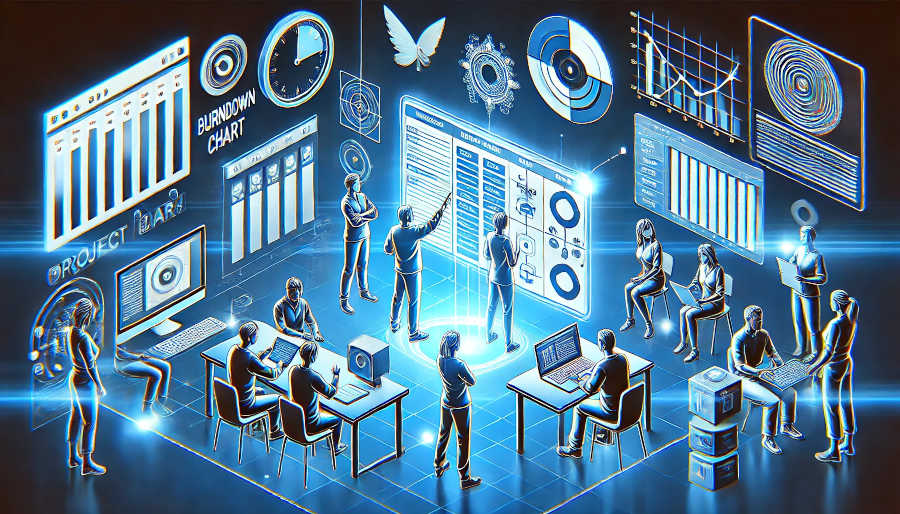The IPD (Integrated Product Development) process has become a cornerstone in the product development strategies of many companies. Within this process, the Technical Review (TR) is a crucial stage that involves multiple teams working in harmony. Teamwork in TR is not just about individuals coming together; it's about a coordinated effort to ensure that the product meets the required technical standards, is feasible, and aligns with the overall business goals. Understanding the key points of teamwork in TR is essential for the success of the entire IPD process. It can prevent costly mistakes, speed up the development cycle, and enhance the quality of the final product.
Clear Roles and Responsibilities
One of the fundamental aspects of effective teamwork in TR is having clear roles and responsibilities. Each team member should know precisely what is expected of them. This clarity eliminates confusion and reduces the chances of tasks slipping through the cracks. For example, the technical experts are responsible for evaluating the product's technical feasibility. They need to analyze whether the proposed design can be implemented with the available technology and resources. They also need to identify any potential technical risks and suggest mitigation strategies.
The project managers, on the other hand, play a crucial role in coordinating the overall process. They are in charge of setting the schedule for the TR, ensuring that all necessary documents are available, and facilitating communication between different teams. They need to make sure that the review process stays on track and that any issues are resolved in a timely manner.
The documentation team is responsible for preparing detailed reports and specifications. These documents serve as the basis for the review. They need to be accurate, comprehensive, and easy to understand. By having clear roles, each team member can focus on their area of expertise, leading to a more efficient and effective TR process.
Effective Communication Channels
Effective communication is the lifeblood of successful teamwork in TR. There should be multiple channels of communication to ensure that information flows freely among team members. Formal meetings are an important part of the communication process. These meetings provide a platform for team members to present their findings, discuss issues, and make decisions. During these meetings, everyone should have the opportunity to voice their opinions and concerns.
In addition to formal meetings, informal communication channels such as instant messaging and email are also crucial. These channels allow team members to quickly share information, ask questions, and get clarifications. For example, if a technical expert discovers a minor issue during the review, they can quickly send an email to the relevant team members to alert them.
Furthermore, visual communication tools such as diagrams, flowcharts, and presentations can greatly enhance the understanding of complex technical concepts. These tools can help team members who may not be as familiar with the technical details to grasp the key points. By having a diverse range of communication channels, teams can ensure that all relevant information is shared and understood, leading to better decision-making during the TR process.
Conflict Resolution Mechanisms

Conflicts are inevitable in any team environment, and the TR process in IPD is no exception. Having effective conflict resolution mechanisms in place is essential to maintain a positive working atmosphere and ensure the progress of the review. When conflicts arise, it's important to approach them with an open mind and a focus on finding solutions.
One approach to conflict resolution is to encourage open dialogue. Team members should be able to express their differences in a respectful manner. By listening to each other's perspectives, it may be possible to find common ground and reach a compromise. For example, if there is a disagreement between the marketing team and the technical team regarding a product feature, both sides should be given the opportunity to explain their reasons.
Another important aspect is to have a neutral mediator. In some cases, when the conflict cannot be resolved through direct communication, a mediator can step in. The mediator can help facilitate the discussion, ensure that all voices are heard, and guide the team towards a resolution. This can prevent the conflict from escalating and disrupting the TR process.
Finally, it's important to learn from conflicts. After a conflict is resolved, the team should analyze what led to the conflict and how it could have been avoided. This can help improve the team's dynamics and prevent similar conflicts in the future.
Knowledge Sharing and Collaboration
Knowledge sharing and collaboration are key to the success of teamwork in TR. The different teams involved in the review process often have diverse areas of expertise. By sharing knowledge, they can leverage each other's strengths and gain a more comprehensive understanding of the product. For example, the manufacturing team may have insights into the production process that can help the design team optimize the product for manufacturability.
Collaboration can take many forms. Cross-functional teams can be formed to work on specific aspects of the review. These teams bring together members from different departments, allowing for a more integrated approach. For instance, a team consisting of engineers, designers, and quality control experts can work together to evaluate the product's performance and quality.
Moreover, knowledge sharing platforms such as internal wikis and databases can be established. These platforms allow team members to access relevant information, best practices, and past review reports. This can save time and improve the efficiency of the review process. By promoting knowledge sharing and collaboration, teams can enhance their collective intelligence and make more informed decisions during the TR process.
Conclusion
In conclusion, teamwork in the TR stage of the IPD process is a complex yet essential aspect of product development. Clear roles and responsibilities provide the foundation for an organized and efficient review. Effective communication channels ensure that information is shared promptly and accurately, enabling better decision-making. Conflict resolution mechanisms help maintain a harmonious working environment and keep the process on track. Knowledge sharing and collaboration enhance the team's capabilities and lead to a more comprehensive evaluation of the product.
Companies that recognize the importance of these key points of teamwork in TR are more likely to achieve successful product development. By investing in training and resources to improve teamwork skills, they can streamline the IPD process, reduce risks, and bring high-quality products to market more quickly. As the business landscape continues to evolve, the ability to effectively manage teamwork in TR will remain a critical factor in the competitiveness of organizations. It is essential for companies to continuously review and improve their teamwork strategies to adapt to changing market demands and technological advancements.
ARTICLE TITLE :Analysis of key points of teamwork of TR in the IPD process ,AUTHOR :ITpmlib

















